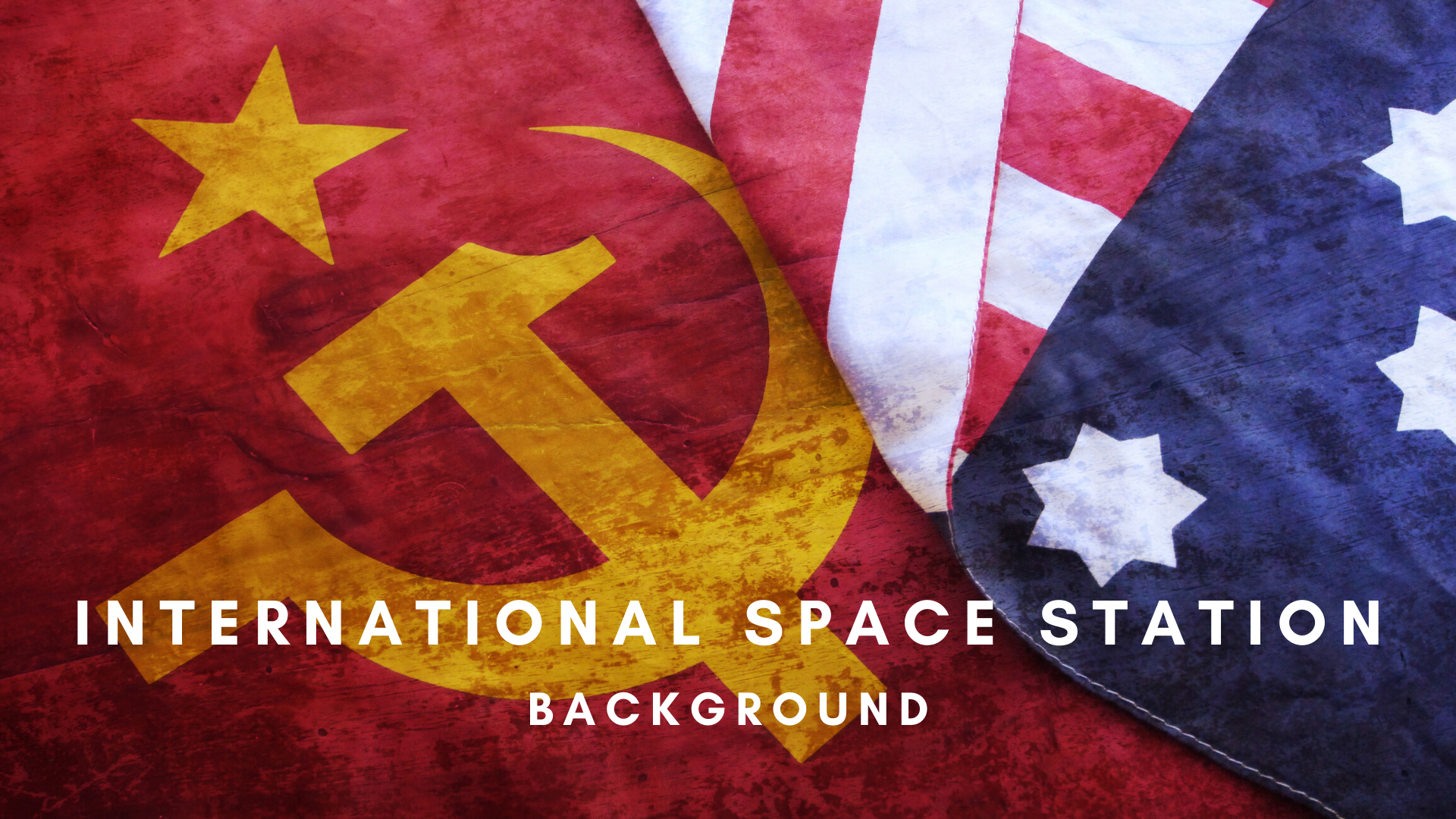
BACKGROUND
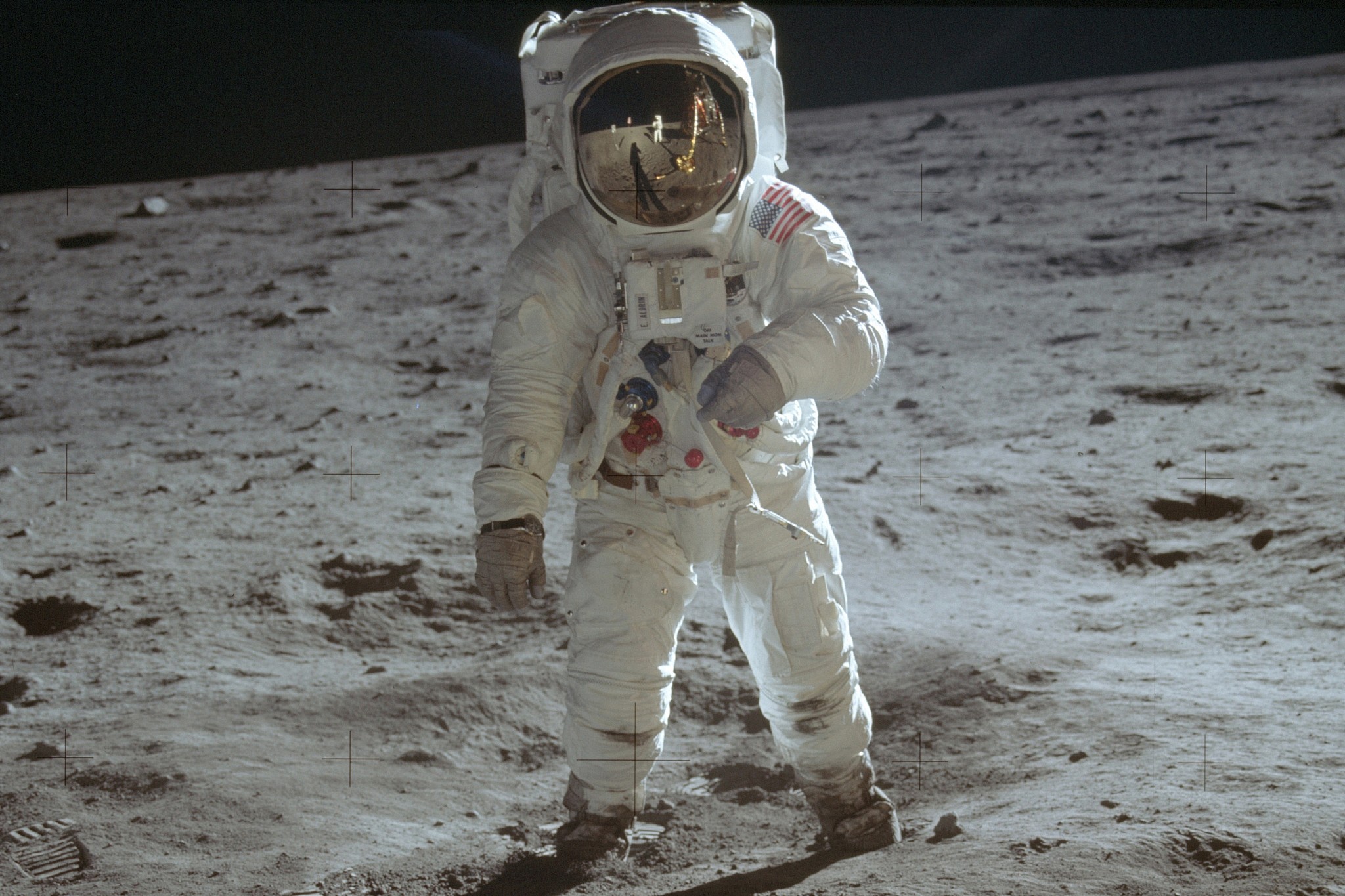
Apollo 11-Humans Landed On Moon, 1969
Photo Credit: NASA
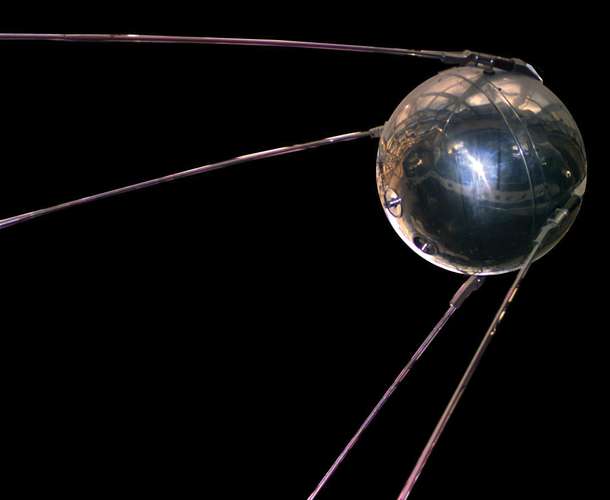
Sputnik 1
Photo Credit: NASA Space Science Data Coordinated Archive (NSSDCA)
"Well, the task I’ve set forth will long outlive our own generation. But together, we too have come through the worst. Let us now begin a major effort to secure the best— a crusade for freedom that will engage the faith and fortitude of the next generation. For the sake of peace and justice, let us move toward a world in which all people are at last free to determine their own destiny.”
~ President Ronald Reagan, speech to the British Parliment at Westminster Hall, June 8, 1982.
For the sake of national pride, countries like the Soviet Union and the United States turned a cold shoulder to one another to scientifically out-compete the other in a race to space. The Space Race began after World War II with each country trying to outdo each other in developing better weapons, and to be the first in space. Showing the upper hand, the Soviet Union launched the first artificial satellite Sputnik 1 in 1957. The United States responded with the successful launch of Explorer 1 in 1958. However, the Soviet Union had other successful firsts: first animals to orbit the Earth (1960), landing the first human artifact on the Moon (Luna 2, 1959), first man (Uri Gagarin, 1961) and woman (Valentina Tereshkova, 1963) in space, and first spacewalk (Alexei Leonov, 1965). The US echoed by successfully launching Alan Shepard into space (1961), John Glenn into orbit (1962) and topping it off by landing the first humans on the Moon in 1969 aboard Apollo 11. The United States ultimately won the space race to the Moon.
“The real reason, why the United States is dipping so deeply into its coffers to support space research is that space spectaculars have become symbolic of technological supremacy…such is the price tag of space status.”
~ Dr. Ralph E Lapp, 1961 (from the Library of Congress, Chronicling America: Historic American Newspapers site)
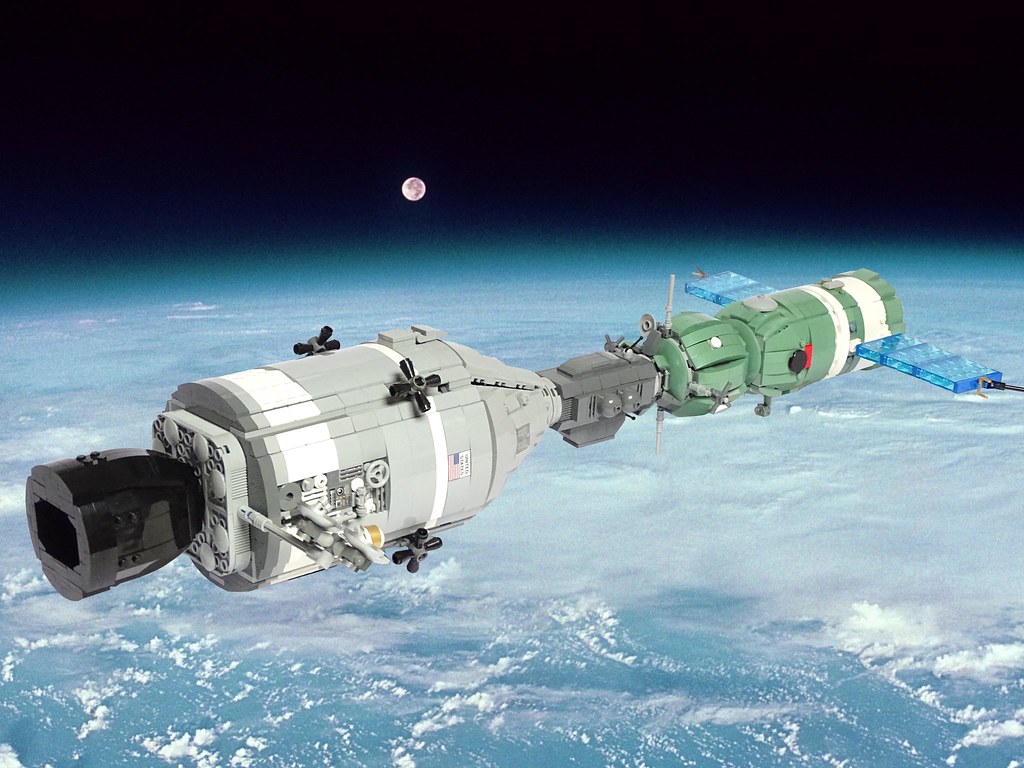
Soyuz-Apollo Mission
Soviet Union and American Space Programs
Photo Credit: Space.com
By the 1970’s, the competition between the Soviet Union and the United States had eased and the countries agreed to a joint Soyuz-Apollo Test Project. After the 1991 fall of the Soviet Union, the cooperation grew between the Russian Federation and the US increasing the scope and success of each space program.
Dreams of Space Station
Drawing of Space Station - Orbit and Launch Facility Concept (1963)
Photo Credit: University of Oregon
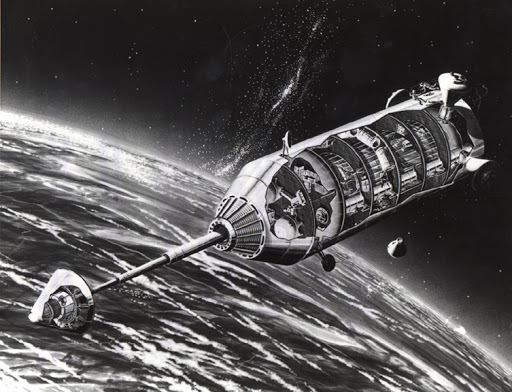
Before the first human space flight in 1961, the United States was planning for a space station after its Mercury program. Originally a military operation, President Eisenhower's Space Act in 1958 turned the space program into National Aeronautics and Space Administration (NASA), but was ultimately charged to "cooperate with other nations and groups of nations" on space science programs. The cooperation occurred when Europe, Canada, and Japan worked on developing a joint hardware and spaceflight systems (1969-1971). President Ronald Reagan openly spoke about the need for more international cooperation in space.
Header: Russia/modified US Flags Photo Credit: ZapoMicron/Fairobserver.com